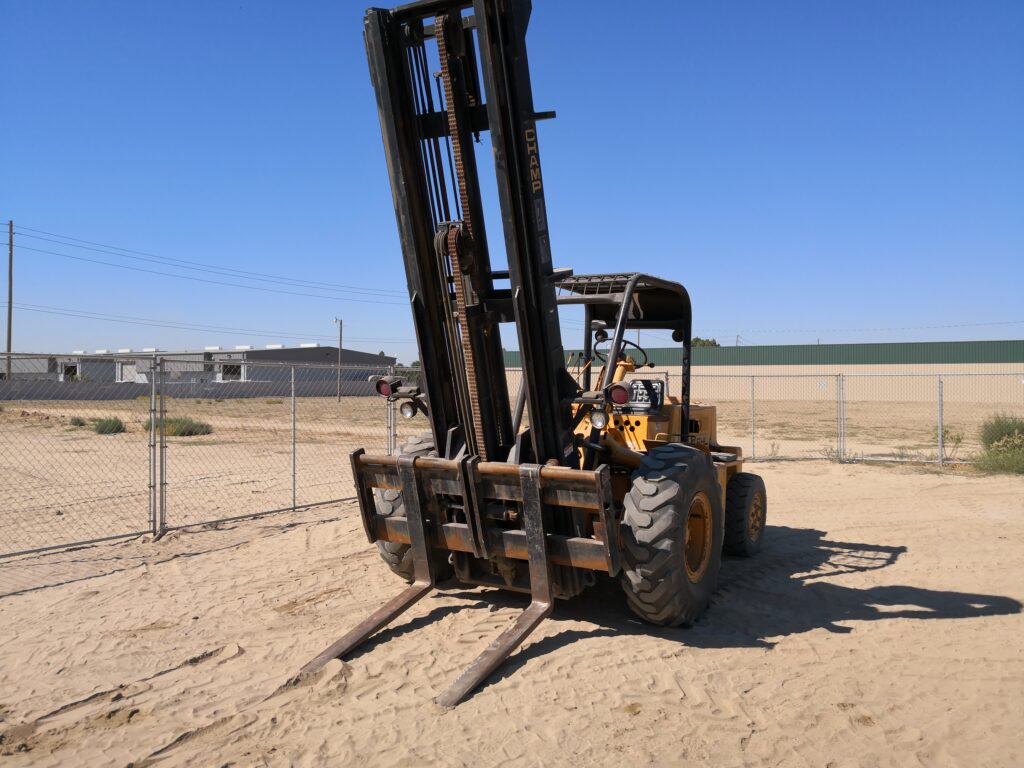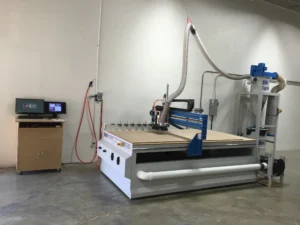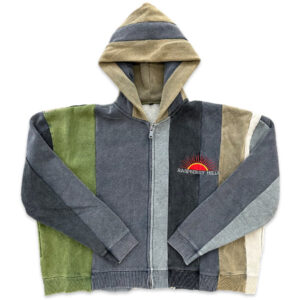
Operating heavy machinery like a rough terrain forklift requires careful attention to safety practices. These machines are built to handle challenging outdoor environments, such as construction sites, farms, or uneven landscapes. However, their power and versatility also come with risks that operators must manage. Proper training, awareness of the surroundings, and adherence to safety guidelines can make a significant difference in preventing accidents. Whether you’re new to using a rough terrain forklift or have years of experience, prioritizing safety ensures everyone on the job site stays protected.
This guide covers essential steps and practices to maintain safety while operating this type of forklift. From preparation before starting the machine to handling it in tough conditions, each stage matters. Let’s explore how to approach this responsibly.
Why Safety Matters with Rough Terrain Forklifts
Rough terrain forklifts differ from standard warehouse forklifts. They are designed for rugged outdoor use, often on uneven ground or in unpredictable weather. This makes them valuable for industries like construction and agriculture, but it also introduces unique hazards. Tipping over, losing control of a load, or colliding with obstacles are real possibilities if safety isn’t prioritized.
Statistics show that forklift-related accidents account for a notable percentage of workplace injuries each year. Many of these incidents stem from inadequate training or overlooking basic precautions. By focusing on safety, operators not only protect themselves but also their coworkers and the equipment itself.
Preparing Before Operating a Rough Terrain Forklift
Preparation sets the foundation for safe operation. Before even starting the engine, take time to assess both the machine and the environment.
Inspect the Forklift
Check the rough terrain forklift thoroughly before use. Look at the tires to ensure they’re in good condition and suited for the terrain. Examine the brakes, steering, and hydraulic systems for any signs of wear or malfunction. A quick walk-around can reveal leaks, loose parts, or damage that might compromise safety.
Review the Operator’s Manual
Every model of a rough terrain forklift has specific features and limits. The operator’s manual provides details on weight capacity, proper handling, and maintenance needs. Familiarize yourself with this information to avoid pushing the machine beyond its capabilities.
Wear Appropriate Gear
Personal protective equipment (PPE) is non-negotiable. A hard hat, steel-toed boots, and high-visibility clothing are standard for most job sites. Depending on the conditions, gloves or safety glasses might also be necessary. This gear reduces the risk of injury if something goes wrong.
Assess the Work Area
Walk the site where you’ll be operating. Look for uneven ground, slopes, or obstacles like rocks and debris. Wet or muddy conditions can affect traction, so note those too. Clear any hazards if possible, or plan a route to avoid them.
Safe Operating Practices for Rough Terrain Forklifts
Once preparation is complete, the focus shifts to how you handle the machine. Safe operation hinges on staying alert and following best practices.
Start with Proper Training
No one should operate a rough terrain forklift without formal training. Certification programs teach critical skills, like how to manage loads on slopes or navigate tight spaces. Even experienced operators benefit from periodic refreshers to stay sharp.
Maintain Stability
These forklifts are prone to tipping on uneven surfaces. Keep the load low to the ground and centered on the forks. Avoid sudden turns or stops, especially when carrying heavy materials. If the terrain feels unstable, slow down and reassess.
Watch Your Speed
Speeding increases the chance of losing control. Rough terrain forklifts aren’t built for high-speed travel, especially on bumpy or sloped ground. Adjust your pace to match the conditions and keep the machine steady.
Use the Forks Correctly
Raise or lower the forks only when the forklift is stationary. Moving with an elevated load shifts the center of gravity and risks tipping. Secure the load properly to prevent it from falling during transport.
Stay Aware of Surroundings
Constant vigilance is essential. Check for people, equipment, or other obstacles in your path. Use the horn to alert others when necessary, especially in busy or noisy areas. Mirrors and cameras, if available, can help with visibility.
Handling Challenges with Rough Terrain Forklifts
Outdoor environments often throw unexpected challenges at operators. Knowing how to respond keeps safety intact.
Navigating Slopes
Slopes are common on rough terrain job sites. When going uphill, keep the load facing upward to maintain balance. Downhill, tilt the forks slightly back and move slowly to avoid sliding. Avoid turning on a slope whenever possible—it’s a recipe for tipping.
Managing Weather Conditions
Rain, snow, or wind can make operating a rough terrain forklift trickier. Wet ground reduces tire grip, while strong winds can destabilize tall loads. If conditions worsen, pause work until it’s safe to proceed.
Dealing with Heavy Loads
Every forklift has a maximum capacity. Exceeding it strains the machine and risks collapse. Check the load weight beforehand and split it into smaller trips if needed. Balance is just as important as weight—uneven loads are harder to control.
Maintenance Tips for Long-Term Safety
A well-maintained rough terrain forklift is a safer one. Regular care prevents breakdowns that could lead to accidents.
Perform Routine Checks
Daily inspections catch small issues before they grow. Test the brakes, lights, and horn before each shift. Look at the forks for cracks or bending, as these can fail under stress.
Schedule Professional Servicing
Beyond daily checks, have a technician service the forklift periodically. They can spot wear in the engine, hydraulics, or other systems that might not be obvious. Follow the manufacturer’s recommended schedule for this.
Clean the Machine
Dirt and debris from rough terrain can clog filters or damage moving parts. Wash the forklift regularly, paying attention to the undercarriage and tires. A clean machine runs more reliably.
Training Others on Rough Terrain Forklift Safety
Safety isn’t just the operator’s responsibility. If you work on a team, sharing knowledge strengthens the whole group.
Lead by Example
Show newer operators how to inspect the machine or handle a load properly. Demonstrating safe habits sets a standard for others to follow.
Encourage Questions
Inexperienced team members might hesitate to ask for help. Create an environment where they feel comfortable clarifying doubts about operating a rough terrain forklift. A quick answer could prevent a mistake.
Share Resources
Point coworkers to training courses, manuals, or videos that explain forklift safety. The more everyone knows, the smoother operations will run.
Final Thoughts on Rough Terrain Forklift Safety
Operating a rough terrain forklift demands respect for its power and the environment it works in. By preparing carefully, following safe practices, and maintaining the machine, operators can minimize risks effectively. It’s about building habits that protect not just yourself but everyone around you. Whether you’re lifting lumber on a construction site or moving supplies on a farm, these steps ensure the job gets done without incident. Stay mindful, stay trained, and keep safety first.





